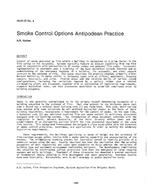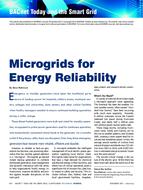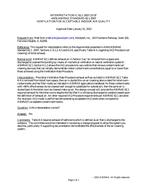Click here to purchase
Airborne microorganisms including fungi and bacteria are omnipresent, with potentially serious health implications in today’s modern sealed high-rise structures. The duct system that provides air conditioning may become a disease vector by harboring and distributing pathogens, so it is important to investigate appropriate germicidal methods. In this study, we investigated the germicidal effect of microwave radiation on fungi, which can reside on the inner surfaces of the duct system or be carried by the airflow passing through. The germicidal effect of microwave radiation is generally attributed to the heat generated by the dielectric properties of water in the target object and has been recommended for contaminated media and test tubes. We evaluated the germicidal effect of microwave radiation on fungi using fungal plates in which dry spores of two species of fungi, e.g., Cladosporium herbarum and Fusarium solani were sandwiched with nutrients between an optically transparent plastic plate and airpermeable transparent film. Four exposure times were used (10 seconds, 1 minute, 10 minutes, 30 minutes) at a fixed microwave output power (800 W) to determine the most effective exposure time. The exposed biosensor plates were taken out of the experimental system and incubated for 24 hours in a humidity chamber (97.3% relative humidity) and fungal mycelium lengths were measured. C. herbarum mycelium lengths were 433.3 µm (or 17100 µin.) (control), 401.7 µm (or 15800 µin.) (10 sec), 445.0 µm (or 17500 µin.) (1 min), 420.0 µm (or 16500 µin.) (10 min) and 400.0 µm (or 15700 µin.) (30 min), while F. solani mycelia grew to 168.3 µm (or 6630 µin.) (control), 456.7 µm (or 18000 µin.) (10 sec), 210.0 µm (or 8270 µin.) (1 min), 440.0 µm (or 17300 µin.) (10 min) and 221.7 µm (or 8730 µin.) (30 min). Thus none of the fungal spores used in this test were affected by any irradiation duration we used. We are planning a test with longer exposure times, e.g., 60 minutes, and a higher microwave output power. A larger number of trials will be conducted to reduce the impact of unwanted variations such as the growth length of F. solani’s mycelia.
Citation: IAQ Conference: IAQ 2010: Airborne Infection Control
Product Details
- Published:
- 2011
- Number of Pages:
- 8
- File Size:
- 1 file , 680 KB
- Product Code(s):
- D-IAQ2010-C103


